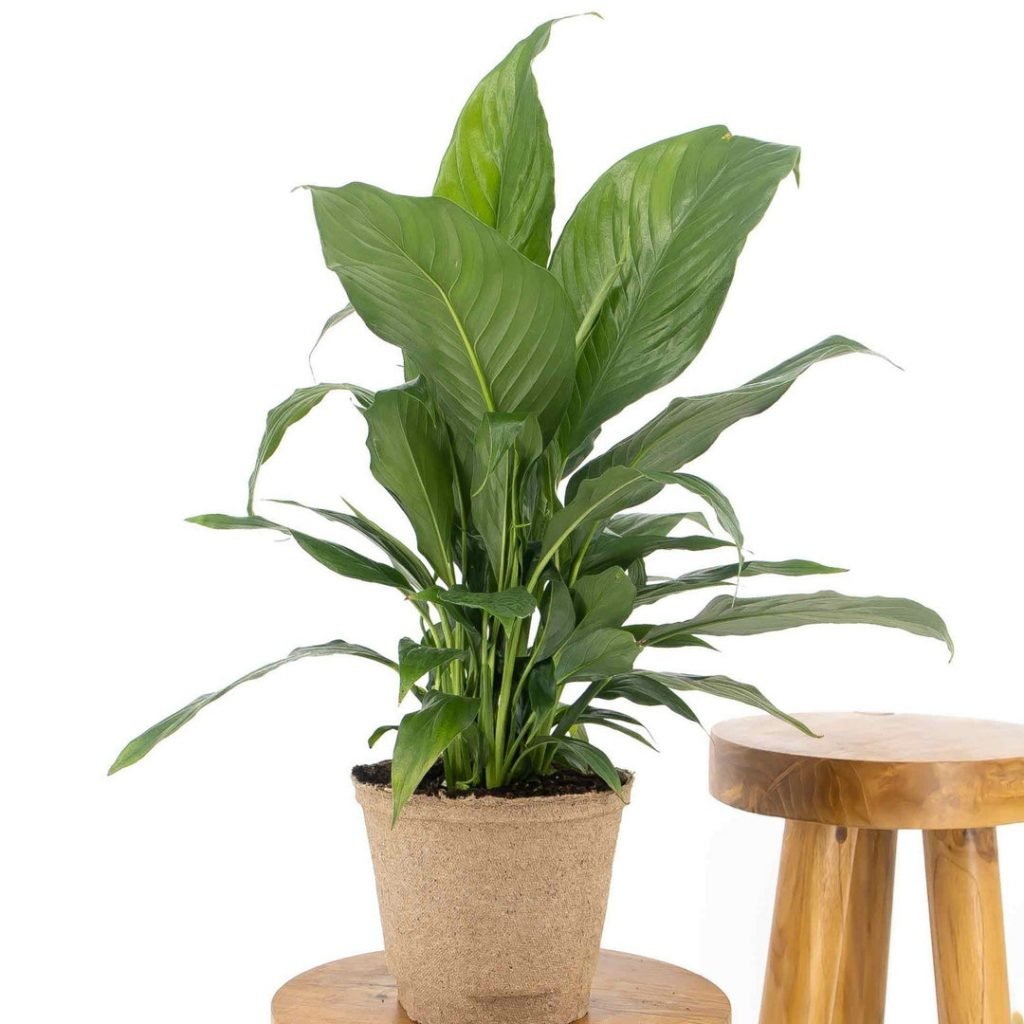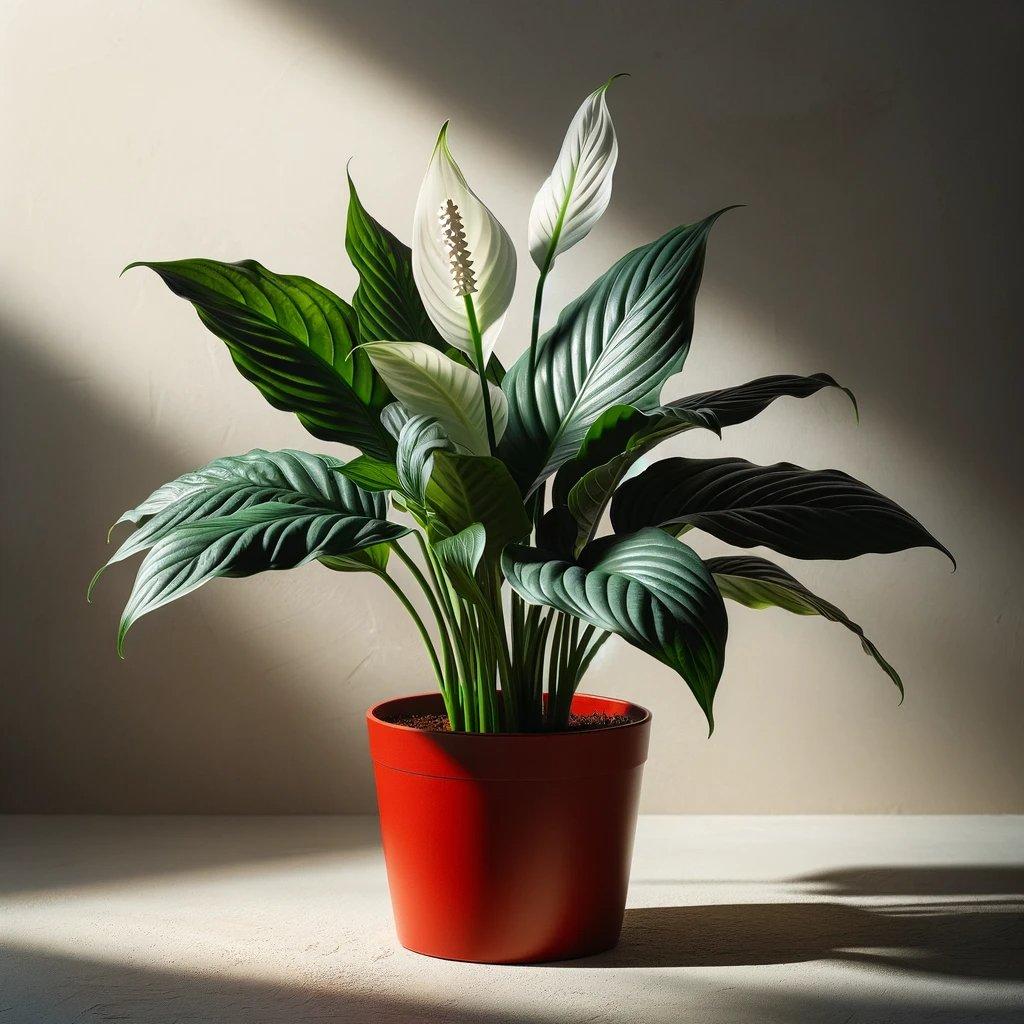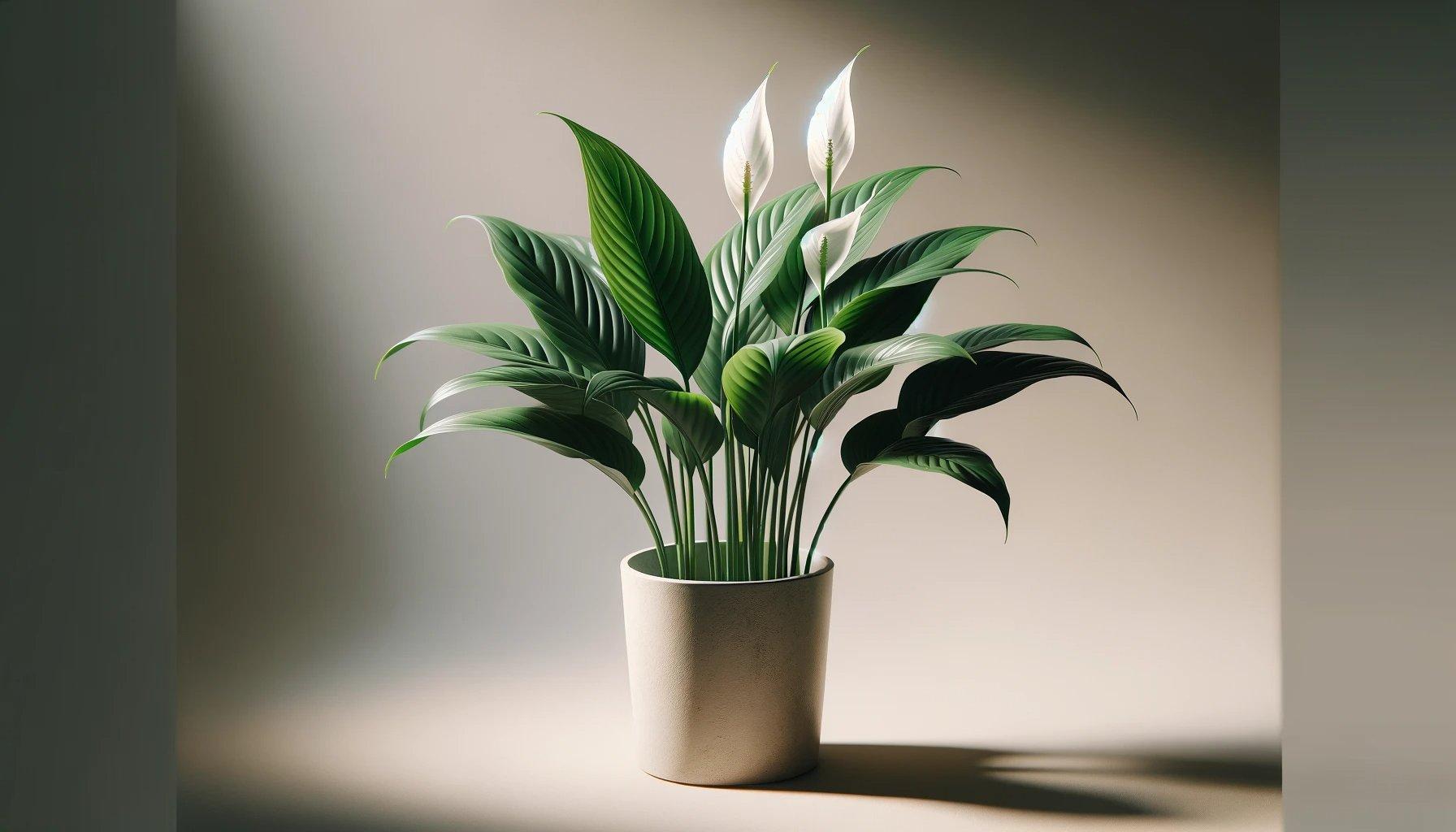Hey there, plant enthusiasts! Are you ready to delve into the world of Peace Lilies? These elegant plants, scientifically known as Spathiphyllum, are a favorite among indoor gardeners for their lush foliage and striking white blooms. As a long-time Peace Lily parent, I’m here to guide you through everything you need to know to care for these beautiful plants. Let’s embark on this green journey together! 🌱🌼

Light: Finding the Sweet Spot 🌞
Mastering the Art of Light Exposure
Striking the Right Balance: Peace Lilies thrive in moderate to low light conditions. They’re native to tropical rainforests, where they grow under the canopy, so they’re accustomed to filtered light.
Optimal Light Conditions:
- Place your Peace Lily in a spot with indirect sunlight. A room with a north or east-facing window is ideal.
- Too much direct sunlight can scorch their leaves, so avoid placing them in overly sunny spots.
Water: Quenching Thirst the Right Way 💧
Crafting a Perfect Watering Schedule
Consistency is Key: These plants like their soil to be consistently moist. I’ve found that watering once a week works well, but this can vary depending on your home’s humidity and temperature.
Tips for Ideal Watering:
- Wait until the top inch of soil dries out before watering again.
- Use lukewarm water to avoid shocking the plant’s roots.
Environment: Creating a Tropical Haven 🌴
Emulating the Peace Lily’s Natural Habitat
Temperature and Humidity Needs: Peace Lilies enjoy warm, humid environments. They thrive in temperatures between 65-75°F (18-24°C) and appreciate higher humidity levels.
How to Maintain the Perfect Environment:
- A humidifier can be a great investment if your home’s air is dry.
- Keep them away from drafts, air conditioning, or heating vents.
Growth: Fostering Healthy Development 🌿
Understanding Your Peace Lily’s Growth
Growth Expectations: These plants are relatively slow growers but can reach impressive sizes if given the right care. The lush green leaves and occasional white blooms make for a stunning display.
Encouraging Robust Growth:
- Fertilize sparingly – once every 6 weeks during the growing season with a balanced, liquid fertilizer.
- Regularly dust the leaves to allow for efficient photosynthesis.
Repotting: Giving Room to Flourish 🪴
Repotting Essentials
Knowing When to Repot: It’s time to repot when you see roots coming out of the drainage holes or if the growth seems stunted. Generally, repotting every 2-3 years is sufficient.
Repotting Steps:
- Choose a new pot that’s slightly larger than the current one.
- Gently remove the plant, being careful with the roots.
- Use fresh potting mix and water well after repotting.
Propagating: Expanding Your Peace Lily Collection 🌱
Simple Steps to Propagate
Propagating with Ease: One of the joys of owning a Peace Lily is how easily they can be propagated. The division is the most common method.
How to Propagate:
- During repotting, gently divide the plant at the roots.
- Plant each division in its pot with a suitable potting mix.
Toxicity to Pets: A Critical Reminder 🐾
Keeping Your Furry Friends Safe
Understanding the Risks: It’s important to note that Peace Lilies are toxic to both cats and dogs if ingested. The plant contains calcium oxalate crystals which can cause irritation and swelling.
Precautions to Take:
- Keep the plant out of reach of pets.
- If you suspect your pet has chewed on the plant, contact a veterinarian immediately.

Pros and Cons of Owning a Peace Lily
Owning a Peace Lily comes with a unique set of benefits and challenges. Let’s break them down:
| Pros | Cons |
|---|---|
| 🌿 Aesthetic Appeal: Peace Lilies have lush green foliage and elegant white blooms, adding a touch of sophistication to any space. | ☀️ Light Sensitivity: They require indirect sunlight; too much direct light can harm them. |
| 🌬️ Air Purification: Known for their ability to purify indoor air, making your living space healthier. | 💧 Watering Specifics: Over-watering or under-watering can lead to problems; they require a consistent watering schedule. |
| 🌡️ Adaptable: Peace Lilies are quite adaptable to various indoor environments, as long as extreme conditions are avoided. | 🐾 Toxic to Pets: The plant is toxic to cats and dogs, necessitating careful placement away from pets. |
| 🌱 Easy Propagation: Propagation through division is straightforward, allowing you to easily multiply your collection. | 🌵 Humidity Requirements: Prefers higher humidity levels, which might need additional effort in drier climates. |
| 💪 Resilient: They are quite hardy and can bounce back from neglect better than many other houseplants. | 📏 Growth Constraints: They are relatively slow growers and can take time to reach a significant size. |
Nurturing a Peace Lily is a gratifying experience. These plants not only add a touch of elegance to your space but also improve indoor air quality. Patience and attentiveness to their needs will ensure your Peace Lily thrives, bringing you joy and serenity. Remember, each plant is unique, and slight adjustments in care might be necessary. Enjoy the journey of growing your Peace Lily, and revel in the tranquility it brings to your home! 🌸🌱✨

